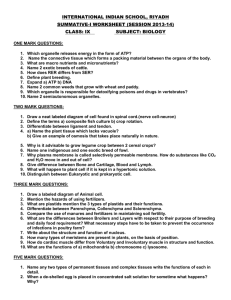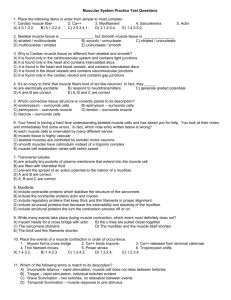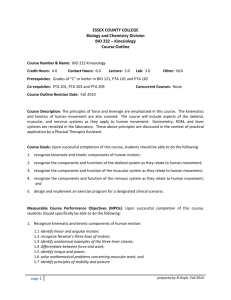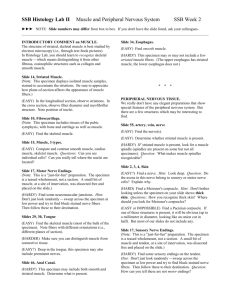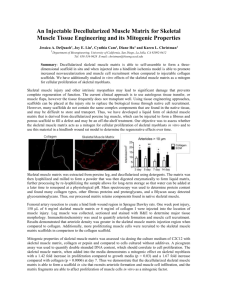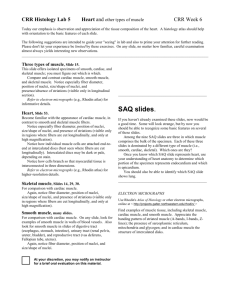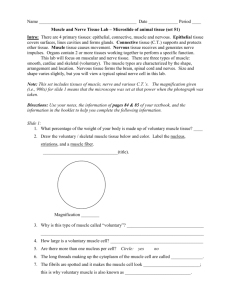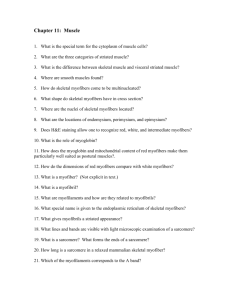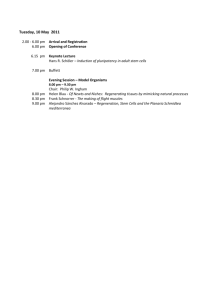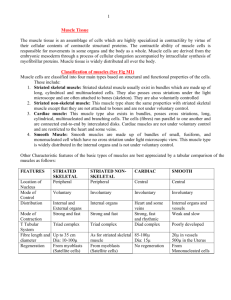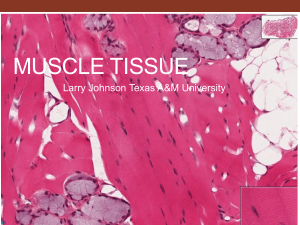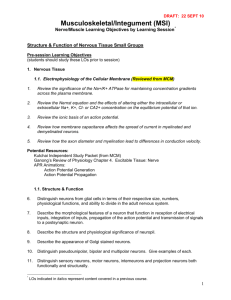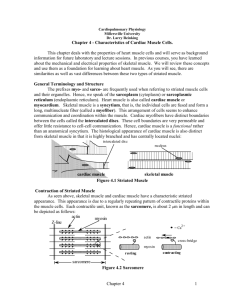Lab Report
advertisement
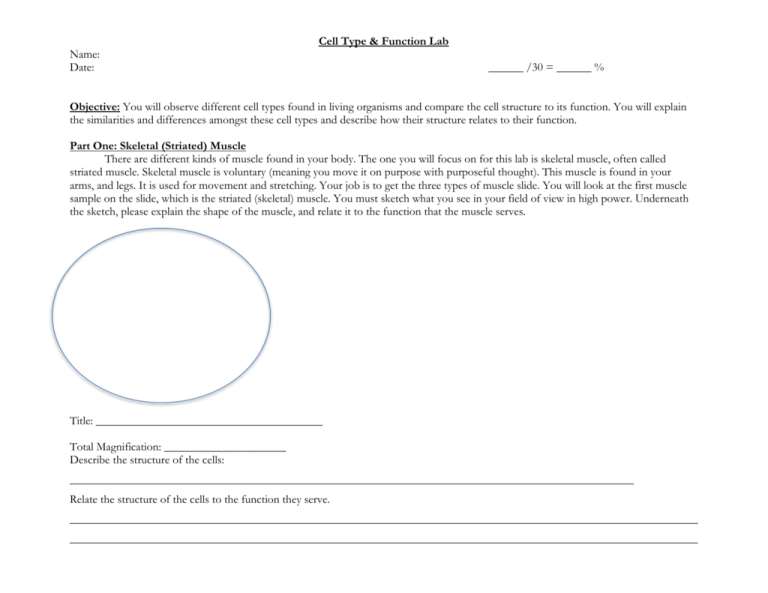
Cell Type & Function Lab Name: Date: ______ /30 = ______ % Objective: You will observe different cell types found in living organisms and compare the cell structure to its function. You will explain the similarities and differences amongst these cell types and describe how their structure relates to their function. Part One: Skeletal (Striated) Muscle There are different kinds of muscle found in your body. The one you will focus on for this lab is skeletal muscle, often called striated muscle. Skeletal muscle is voluntary (meaning you move it on purpose with purposeful thought). This muscle is found in your arms, and legs. It is used for movement and stretching. Your job is to get the three types of muscle slide. You will look at the first muscle sample on the slide, which is the striated (skeletal) muscle. You must sketch what you see in your field of view in high power. Underneath the sketch, please explain the shape of the muscle, and relate it to the function that the muscle serves. Title: _______________________________________ Total Magnification: _____________________ Describe the structure of the cells: _________________________________________________________________________________________________ Relate the structure of the cells to the function they serve. ____________________________________________________________________________________________________________ ____________________________________________________________________________________________________________ Part Two: Blood Cells The blood cells in your body are called erythrocytes. They are circular and small in size. They carry a protein called hemoglobin, which transports oxygen in your blood to all parts of your body. Your red blood cells do not have a nucleus because it takes up too much room in the cell. Your cells want to carry as much oxygen as possible. This is why these cells are so small. Their small size increases their surface area to allow those cells to carry as much oxygen as possible. Obtain a slide labeled human blood smear. Draw the cells under high power and complete the descriptions under the cell. Title: _______________________________________ Total Magnification: _____________________ Describe the structure of the cells: _________________________________________________________________________________________________ Relate the structure of the cells to the function they serve. ____________________________________________________________________________________________________________ ____________________________________________________________________________________________________________ Part Three: Nerve Cells Your nerve cells are referred to as neurons. They are used to communicate messages around your body. The have three main parts: dendrites, axons, and axon terminals. The most noticeable parts are the long arms known as the dendrites. A message is carried along these thin, long branches, which connect with other nerves and eventually connect to your brain and spinal cord. These messages need to be reliable and be carried over long distances efficiently. There is no prepared slide of a neuron, but one has been drawn for you. Complete the questions below the picture. Title: _______________________________________ Describe the structure of the cells: _________________________________________________________________________________________________ Relate the structure of the cells to the function they serve. ____________________________________________________________________________________________________________ ____________________________________________________________________________________________________________ Analysis/Conclusion: (Use the back of this paper to answer) Put together a summary that explains what you learned about a cell’s shape and its function. In your discussion, make sure to mention the three cells you looked at and their differences. Why did they look so different? Why is there a need for them to look different? What is similar about them? What did you learn about a cell’s shape based on its function?




